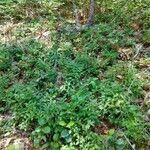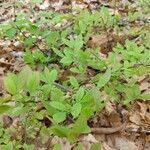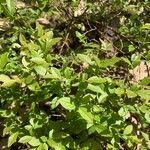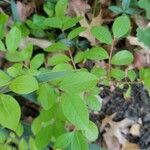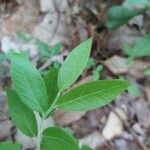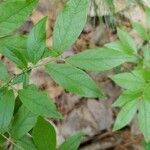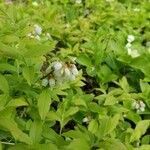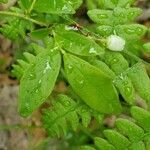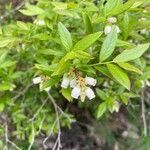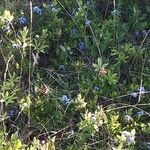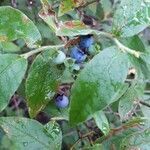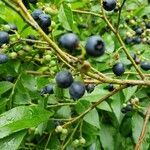A small shrub. It grows 30 cm high. It has wiry, twiggy shoots. It forms a low spreading mat with underground stems or rhizomes up to 10 m long. It puts out uprights from nodes on these stems. The plants become dormant during winter. The leaves are narrow and sword shaped. They are 1.3-3 cm long. They often have teeth along the edge. They turn red in the autumn. The flowers are white in short compact racemes. They are bell shaped. They have a reddish streak. The flowers are 5 mm long. The fruit are large bluish black berries. They vary in colour and size. They can be 2-12 mm across. Several named cultivated varieties occur.
Shrubs 1–6 dm, extensively colonial; lvs deciduous, ± elliptic, mostly (1–)1.5–3 cm, a third to half as wide, sharply serrulate, green and glabrous (or with a few hairs along the veins) to less often glaucous; cal and pedicel often glaucous; cor cylindric to urceolate, 4–6 mm; fr blue-glaucous or less often black, 5–10 mm; 2n=48. Moist or dry, sandy or rocky soil, often in burned-over sites; Lab. and Nf. to Man., s. to N.J., Pa., Ill., and Minn., and in the mts. to N.C. (V. brittonii; V. lamarckii; Cyanococcus a.)
